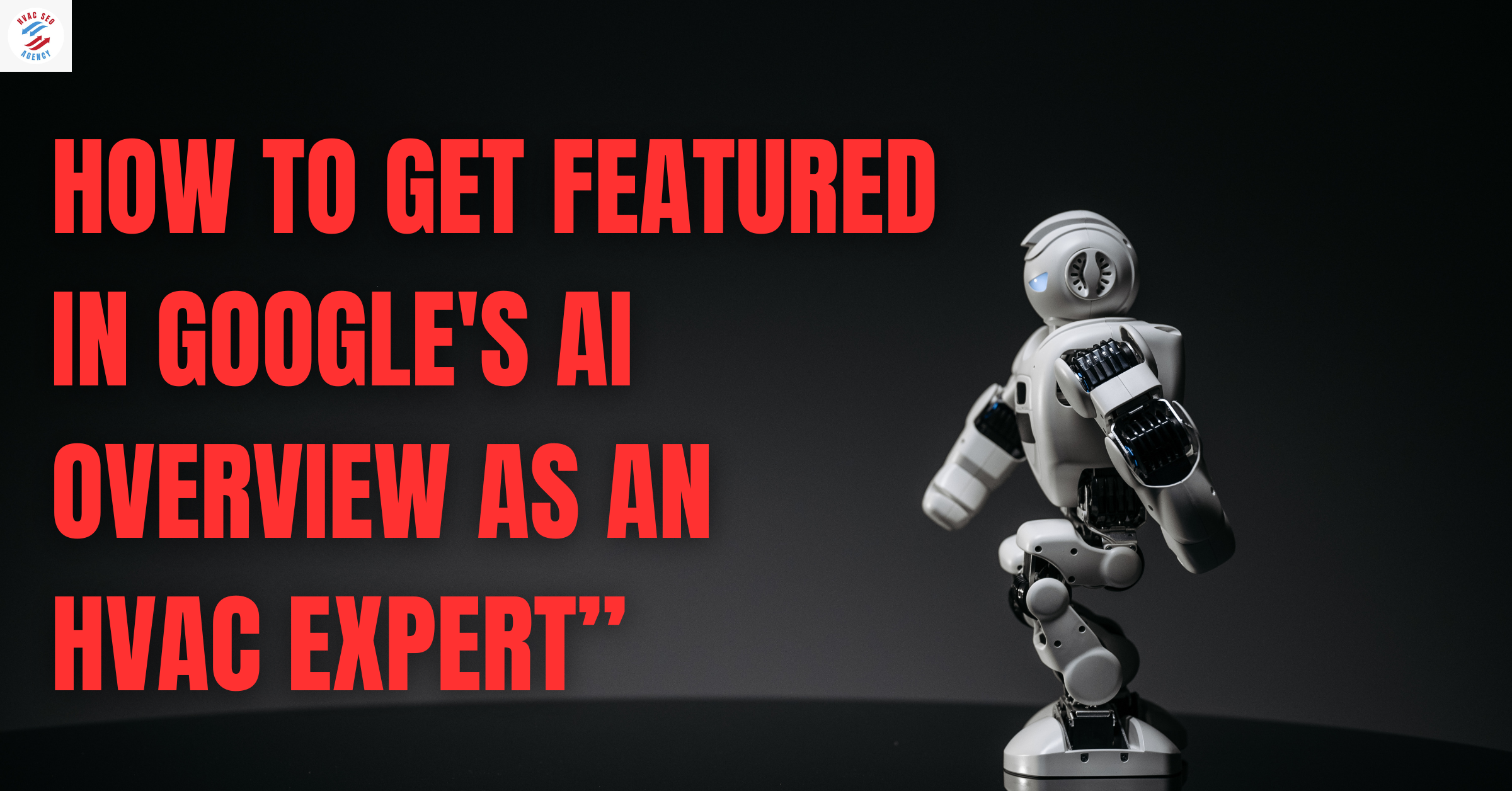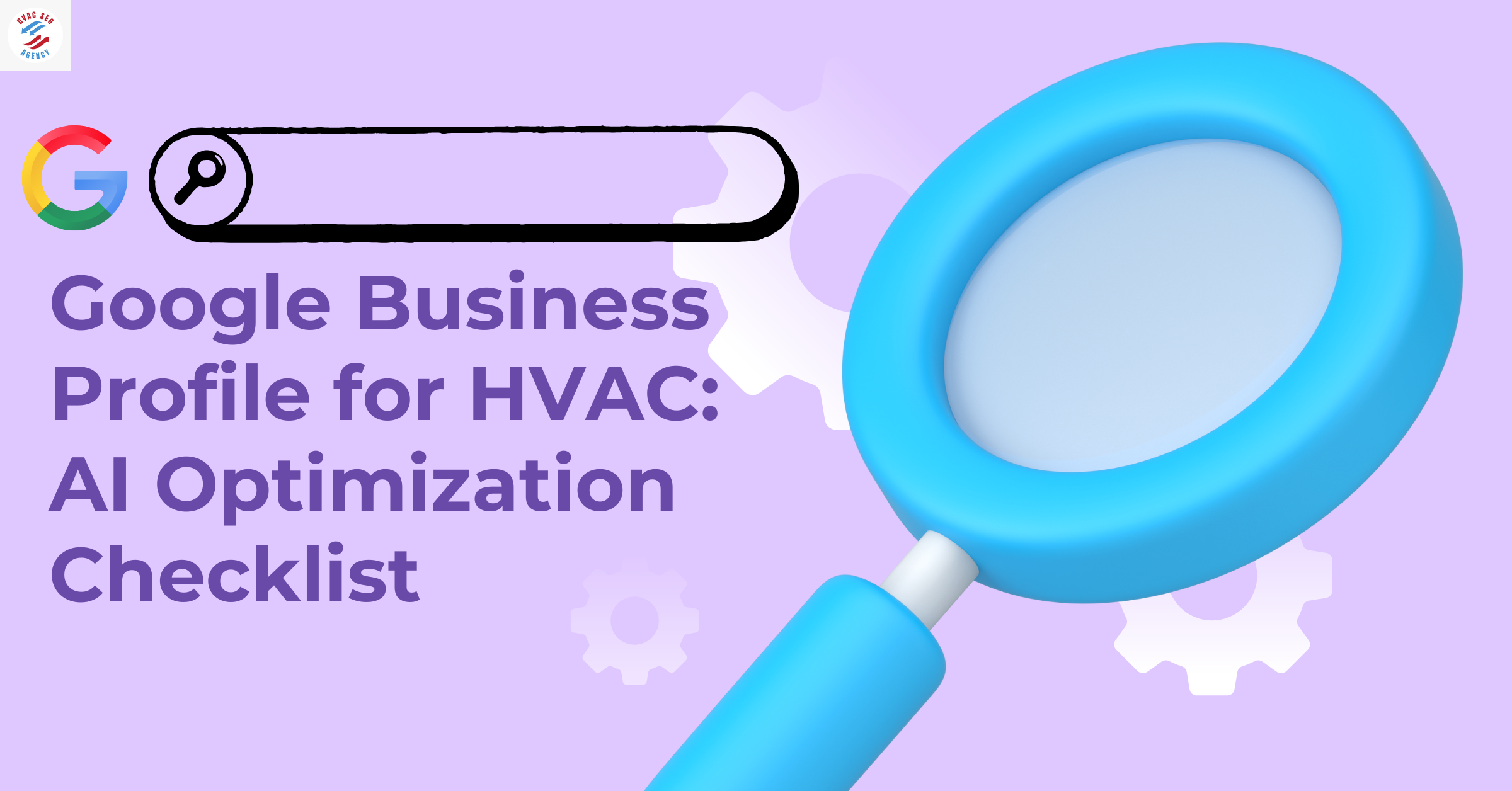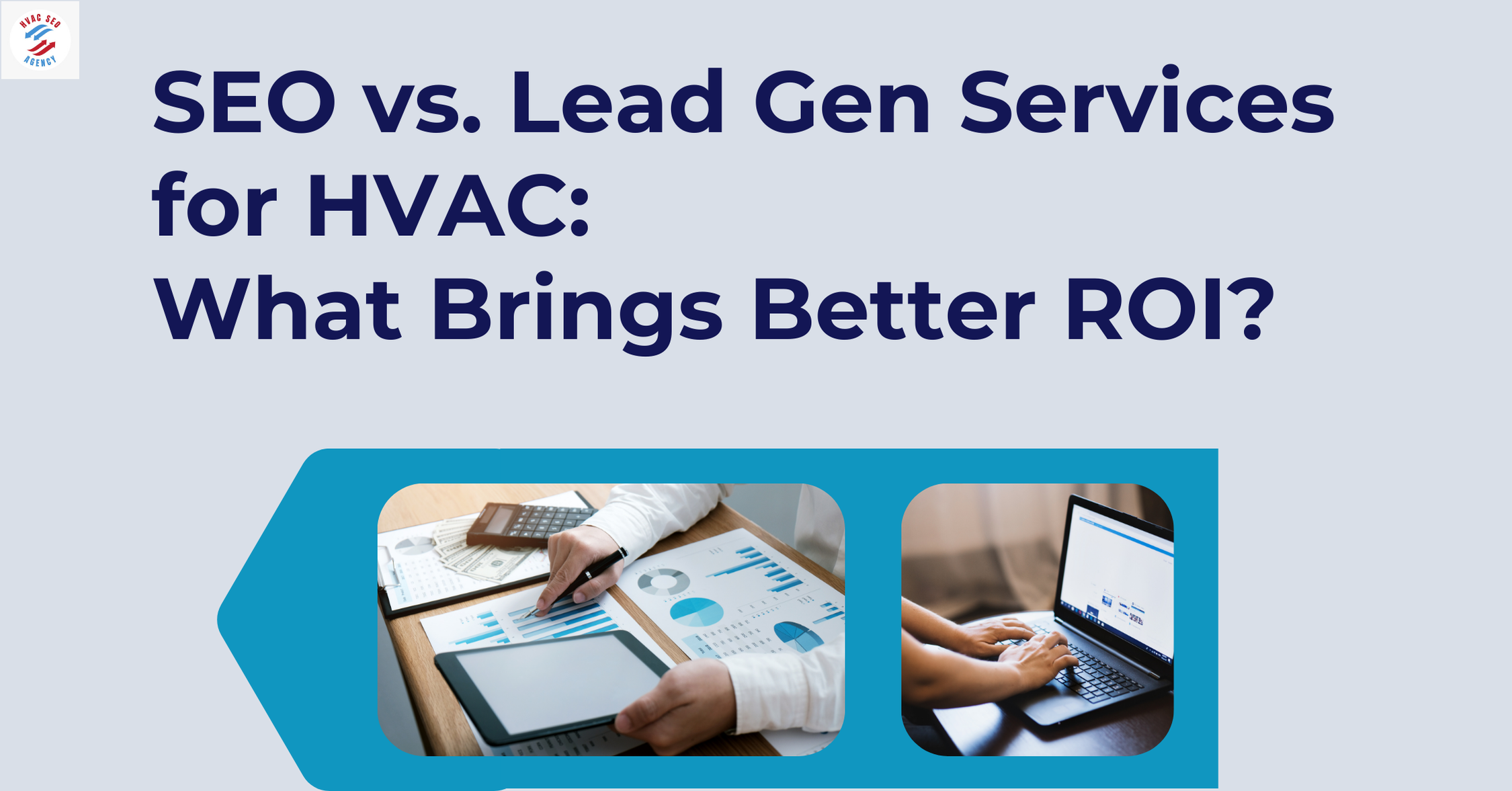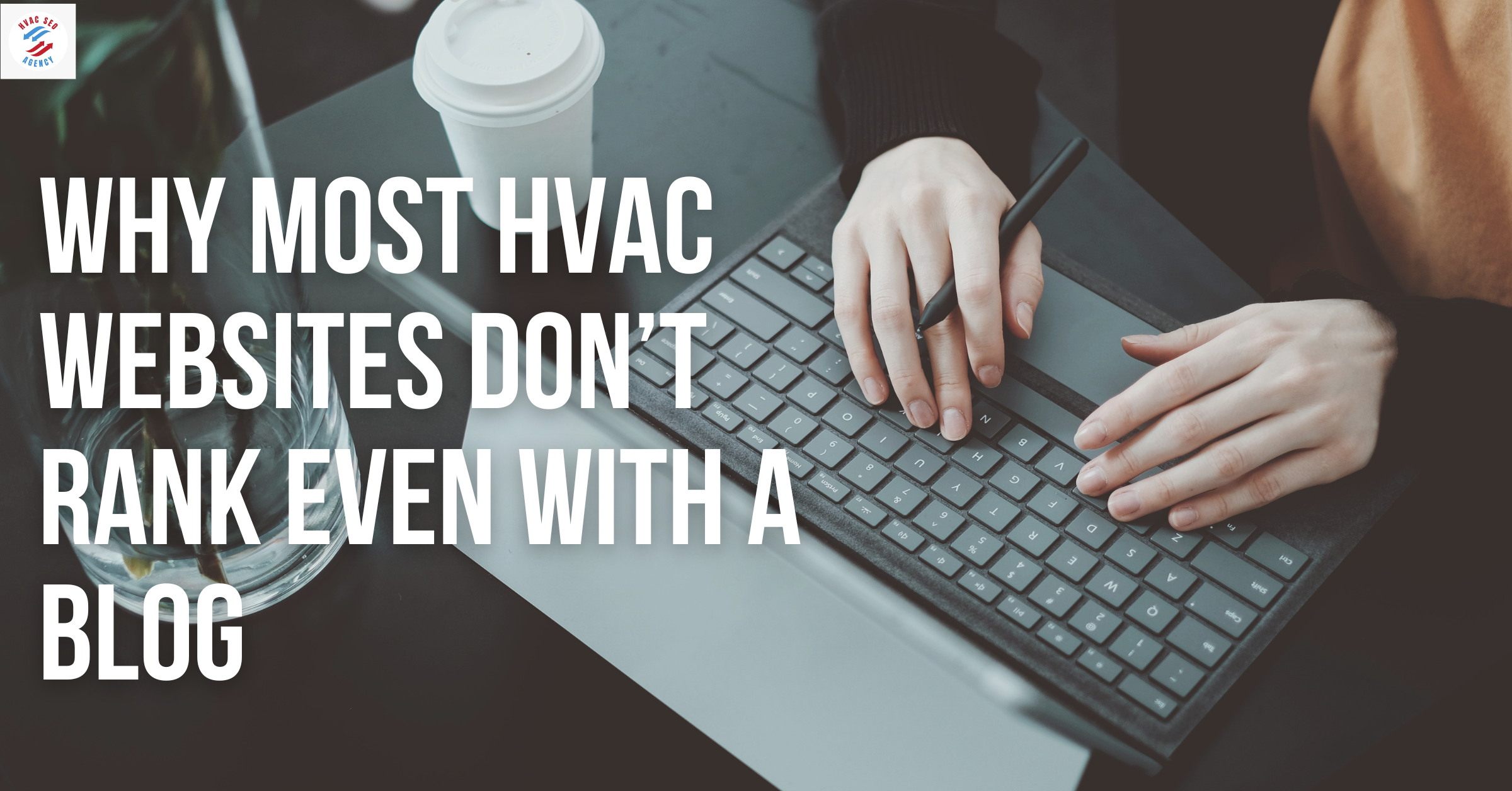5 Ways to Reduce Operating Costs for HVAC Contractors

Reducing HVAC business costs starts with leveraging technology to optimize operations. Modern HVAC contractors face challenges such as managing schedules, inventory, and fleet operations, which can quickly drive up costs. By adopting advanced tools and software, contractors can save time, reduce inefficiencies, and improve overall profitability. Additionally, integrating technology creates smoother workflows, improves customer satisfaction, and allows businesses to scale their operations more effectively.
One key way to reduce costs is by using cloud-based scheduling and dispatch software. This allows HVAC companies to assign jobs more efficiently, track technicians in real time, and ensure optimal route planning. By reducing fuel consumption and idle time, businesses can lower expenses while increasing the number of service calls completed per day. Additionally, investing in predictive maintenance technology can help HVAC contractors proactively service equipment before it fails, avoiding costly emergency repairs.
Another major expense for HVAC businesses is marketing. Partnering with an Affordable HVAC SEO Agency can help reduce customer acquisition costs while improving online visibility. Instead of spending large sums on traditional advertising, HVAC businesses can leverage search engine optimization (SEO) to attract more organic traffic. A well-optimized website, combined with local SEO strategies, ensures that potential customers find your business when searching for HVAC services in their area.
Automating inventory management is another effective way to cut costs. HVAC businesses often struggle with overstocking or running out of essential parts, which can lead to unnecessary spending or get more HVAC services calls. Inventory management software tracks usage trends and automatically replenishes stock when necessary, ensuring that businesses only purchase what they need.
Additionally, embracing digital invoicing and payment processing reduces paperwork and accelerates cash flow. By offering customers online payment options, HVAC contractors can reduce the time spent on manual billing, eliminate errors, and improve overall financial management.
Finally, adopting customer relationship management (CRM) software enhances customer retention, leading to long-term savings. Maintaining relationships with existing clients is far more cost-effective than constantly acquiring new ones. A CRM helps businesses follow up with clients, schedule maintenance reminders, and offer promotions, ensuring steady revenue.
Key Tools to Implement:
HVAC Business Management Software: Platforms like ServiceTitan, Jobber, and Housecall Pro automate scheduling, invoicing, and customer management. By reducing manual work, contractors can save up to 50% in administrative costs while increasing productivity. This enables technicians and office staff to focus on critical tasks instead of time-consuming paperwork.
GPS Fleet Tracking: Monitoring vehicle locations in real-time helps optimize technician routes, cutting fuel consumption by up to 20% and reducing wear and tear on vehicles. These savings not only lower costs but also enhance service response times, enabling more appointments per day and improving customer satisfaction.
Digital Inventory Management: Tracking parts and equipment digitally prevents overstocking and stockouts, saving storage costs and ensuring technicians have the tools they need when they need them. This reduces delays in service delivery and eliminates wasted resources.
Real Savings from Technology
Here’s how technology impacts operational costs:
Visual Representation:
Imagine a pie chart showing how each automation tool contributes to overall savings:
30% savings from fleet tracking.
40% savings from business management software.
30% savings from inventory management.
Additional Benefits of Technology
Improved Data Accuracy: Automation reduces human error, ensuring accurate billing, inventory counts, and customer records.
Enhanced Team Communication: Tools like real-time communication apps ensure technicians and office staff stay aligned on service calls and updates, minimizing miscommunication-related delays.
Customer Retention: By streamlining operations, HVAC contractors can provide faster, more reliable service, improving client satisfaction and loyalty.
By implementing these efficient HVAC cost strategies, contractors can significantly reduce operating expenses while enhancing service delivery. The long-term benefits of adopting technology extend beyond cost savings, helping businesses grow sustainably in a competitive market.
Optimize Energy Efficiency
Energy efficiency is another critical component of HVAC operating expenses management. HVAC businesses often overlook how much energy their own offices, warehouses, and equipment consume daily. Making energy-efficient upgrades and adopting sustainable practices can significantly reduce monthly utility bills while contributing to environmental sustainability. By optimizing energy usage, HVAC contractors not only reduce expenses but also enhance their reputation as forward-thinking, eco-conscious businesses.
Upgrading to energy-efficient lighting, investing in smart thermostats, and using programmable HVAC systems in their own facilities can lead to significant cost savings over time. Additionally, routine maintenance of office and warehouse HVAC systems ensures peak performance, preventing energy waste. This highlights the Importance of Annual Maintenance Plans for HVAC Retention, as offering these plans to customers can improve efficiency and extend equipment lifespan. By promoting energy-efficient solutions and maintenance plans, HVAC businesses can build stronger client relationships while maximizing operational savings.
Energy Efficiency Strategies for HVAC Businesses:
Upgrade to Energy-Efficient Equipment: Outdated HVAC tools and systems consume excessive power, leading to higher utility costs. Upgrading to ENERGY STAR-certified equipment can reduce energy usage by up to 25%, resulting in significant savings over time. Contractors can also use advanced tools with variable-speed motors, which consume less power during off-peak operation periods.
Regular Maintenance of Office HVAC Systems: Poorly maintained HVAC systems in offices or warehouses often lead to energy waste. Cleaning filters, sealing duct leaks, and calibrating thermostats can cut energy consumption by 10–15%. Regular maintenance also extends the lifespan of HVAC systems, reducing the need for costly replacements.
Install Smart Thermostats: Smart and programmable thermostats allow contractors to control heating and cooling schedules effectively. These devices automatically adjust temperatures based on working hours, ensuring energy isn’t wasted during downtime. Contractors can save up to 15% annually on utility costs by installing these systems in their offices and encouraging clients to do the same.
Comparative Data on Energy Optimization:
Visual Insights:
To better illustrate potential savings, a bar graph can compare monthly costs before and after implementing these energy-saving measures. For instance:
Equipment upgrades yield the highest savings at 25%.
Smart thermostats and preventive maintenance each contribute to a 15% reduction in energy costs.
Additional Tips for Energy Efficiency:
Energy Audits: Conducting an energy audit of office spaces can identify hidden inefficiencies, such as poorly insulated areas or outdated lighting systems.
Switch to LED Lighting: Replacing traditional bulbs with LEDs can lower energy consumption for lighting by up to 75%.
Monitor Usage Trends: Use energy monitoring tools to track electricity usage and identify peak consumption times.
Long-Term Benefits:
Energy-efficient practices are not only cost-saving tips for HVAC businesses but also vital for building customer trust. Many clients, especially eco-conscious homeowners and businesses, prefer contractors who prioritize sustainability. Marketing these efforts as part of your brand identity can create a competitive advantage, leading to increased referrals and long-term growth.
By focusing on energy efficiency, HVAC contractors can significantly improve their bottom line while fostering positive environmental impact and strengthening customer relationships.
Invest in Employee Training and Retention
Reducing HVAC business costs isn't just about tools and technology it's also about maximizing the efficiency and productivity of your workforce. A well-trained and satisfied team is an invaluable asset that directly impacts operational costs. Skilled employees are less likely to make costly errors, are more efficient in their work, and contribute to overall customer satisfaction. Investing in employee training and retention can significantly lower costs associated with turnover and improve your business's profitability.
Key Training and Retention Strategies:
Regular Training Programs: Providing consistent technical and soft skills training empowers technicians to stay updated with the latest HVAC trends and technologies.
Cross-Training: Train technicians to handle multiple HVAC system types, reducing dependency on outsourcing and specialized contractors.
Efficiency Training: Focus on improving first-time fix rates, which can lower the need for repeat visits by up to 30%, saving time and labor costs.
Hands-On Workshops: Incorporate workshops on diagnostic tools and energy-efficient systems to increase technicians' expertise.
Employee Retention Initiatives:
Competitive Compensation: Offer attractive salaries, performance-based bonuses, and incentives to motivate employees.
Benefits Packages: Include health insurance, retirement plans, and paid leave to enhance job satisfaction.
Career Growth Opportunities: Establish mentorship programs, leadership training, and clear promotion paths to encourage long-term commitment.
Recognition Programs: Regularly recognize and reward top performers to boost morale and retention.
The True Cost of Employee Turnover
Losing a skilled technician is not just about the direct cost of hiring and training a replacement; it also impacts productivity, customer relationships, and team dynamics. The table below highlights the potential financial burden of turnover and how retention programs provide a clear return on investment:
Impact of Training on Business Performance
Training programs have a measurable impact on operational efficiency and cost reduction. Here’s an example of how investing in employee development improves key business metrics:
Benefits of Investing in Training:
Increased Productivity: Skilled technicians complete jobs faster, reducing overall labor hours and enabling the business to handle more service calls in a day.
Reduced Errors and Rework: Proper training minimizes mistakes, which can lead to costly rework, damaged customer relationships, and lost revenue.
Stronger Customer Retention: Well-trained employees provide high-quality service, improving customer satisfaction. Happy customers are more likely to remain loyal and refer your services to others.
Retention Program Success Stories
An HVAC company in San Antonio implemented cross-training programs for their team, leading to a 20% reduction in third-party contractor costs and improved job completion rates.
A business in Austin introduced a mentorship program, reducing employee turnover by 35% within two years and saving approximately $40,000 annually on recruitment costs.
Additional Insights:
Employee satisfaction surveys can help identify areas for improvement in work culture and retention.
Investing in quality tools and resources for technicians reduces frustration and improves job performance.
By focusing on employee training and retention, HVAC contractors can reduce labor-related costs, maintain a motivated workforce, and ensure long-term business success. These strategies not only save money but also foster a positive work environment that attracts top talent.
Offer Preventive Maintenance Programs
Preventive maintenance is not just a value-added service for clients; it’s a critical strategy for HVAC contractors to stabilize revenue and reduce operational costs. These programs focus on regular inspections and servicing of HVAC systems to identify potential problems before they become costly repairs. By promoting preventive maintenance, HVAC contractors can ensure consistent cash flow, minimize unexpected expenses, and build stronger client relationships.
Why Preventive Maintenance Matters for HVAC Contractors
Consistent Cash Flow: Maintenance contracts create a steady and predictable income stream, helping contractors avoid financial instability during slow seasons.
Reduced Emergency Repairs: Proactive inspections and servicing reduce the likelihood of sudden breakdowns, cutting emergency repair costs by up to 50%.
Extended Equipment Lifespan: Regular maintenance prevents wear and tear, extending the lifespan of HVAC systems and reducing the frequency of replacements.
Improved Client Retention: Offering maintenance programs builds trust and loyalty as clients see tangible value in preventing breakdowns and reducing energy bills.
Benefits of Preventive Maintenance Programs (With Data)
Revenue Impact Example
To understand how preventive maintenance can stabilize revenue, let’s compare earnings with and without maintenance contracts:
Graph Representation:
A bar graph can visually show how consistent revenue from maintenance contracts offsets the unpredictable nature of emergency repair income, ensuring financial stability for HVAC businesses.
The bar graph above compares revenue with and without maintenance contracts for HVAC businesses. It illustrates:
Without Maintenance Contracts: Emergency repair revenue is higher but unpredictable, at $40,000 annually, with no revenue from maintenance contracts.
With Maintenance Contracts: Emergency repair revenue drops to $15,000, while maintenance contracts contribute a stable $35,000, increasing total revenue to $50,000.
Key Strategies to Implement Preventive Maintenance Programs
Educate Clients on the Cost Benefits:
Use real-life case studies to demonstrate how preventive maintenance reduces long-term costs.
Example: A client who invested $300 annually in maintenance avoided a $3,000 system replacement after catching early issues.
Bundle Services for Increased Value:
Combine maintenance contracts with additional services like energy audits or discounted emergency repairs.
Example Bundle Package: Preventive maintenance + annual duct cleaning + thermostat calibration for $750/year.
Leverage Predictive Maintenance Technology:
Invest in IoT-enabled tools that monitor HVAC equipment health in real-time.
Predictive tools can send alerts for potential failures, allowing contractors to address issues proactively and reduce repair costs.
Offer Tiered Maintenance Plans:
Provide flexibility to clients by offering different levels of service:
Basic Plan: $300/year (Annual inspection + filter replacement)
Premium Plan: $500/year (All basic services + energy efficiency check)
Comprehensive Plan: $750/year (Premium services + emergency repair discounts)
Additional Insights:
Customer Satisfaction Increases: Clients with maintenance contracts are 3 times more likely to recommend HVAC services to others, boosting referrals.
Seasonal Maintenance Campaigns: Promote preventive maintenance during the off-peak seasons to fill downtime with steady revenue.
Impact on Emergency Repairs
Improved Operational Efficiency:
Preventive maintenance ensures that equipment operates at peak efficiency, reducing energy consumption by up to 20%.
Regular servicing can cut utility bills for clients, increasing their satisfaction with your services.
Higher Profit Margins:
Preventive maintenance is a high-margin service that requires fewer resources than emergency repairs. For instance, servicing a system costs $150–$200, while emergency repairs may cost $1,000+.
Increased Business Reputation:
Businesses offering reliable maintenance services are viewed as proactive and client-focused, improving their reputation in competitive markets.
Case Study: The Financial Advantage of Maintenance Plans
A contractor in Austin, Texas, introduced a maintenance program for 200 clients, each paying $400 annually. The program generated $80,000 in recurring revenue, replacing the unpredictable income from emergency repairs and reducing stress during the slow season.
By offering preventive maintenance programs, HVAC contractors can establish themselves as reliable service providers while stabilizing their revenue and reducing operating costs. Investing in proactive strategies like these ensures long-term business growth and client satisfaction.
Manage Overhead Costs Effectively
Overhead costs, such as administrative expenses, fleet management, and office utilities, account for a significant portion of an HVAC contractor's operational budget. If left unchecked, these costs can erode profit margins. To reduce HVAC business costs and ensure financial stability, contractors must implement efficient HVAC cost strategies to optimize these recurring expenses. The key is to streamline operations, reduce waste, and reallocate resources to high-impact areas without compromising service quality.
Key Overhead Cost-Reduction Strategies
Outsource Non-Core Functions:
Administrative tasks like accounting, HR, and digital marketing can be outsourced to specialized firms or virtual assistants. This eliminates the need to hire full-time staff and reduces payroll expenses.
Example: Partnering with a dedicated HVAC marketing agency like hvacseoagency.com can save up to 30% compared to hiring and training an in-house marketing team.
Additional Benefits: Access to experts with industry-specific knowledge, faster implementation of strategies, and reduced time-to-results.
Negotiate Bulk Discounts with Vendors:
Build long-term relationships with suppliers to negotiate favorable pricing on frequently used items like refrigerants, filters, and parts.
Example: Ordering parts in bulk can reduce costs by 10–20% and improve inventory management.
Pro Tip: Combine orders across multiple projects to meet volume thresholds for discounts.
Optimize Fleet Operations:
Regular Maintenance: Keeping vehicles in peak condition improves fuel efficiency and reduces costly repairs. Simple actions like tire pressure checks and oil changes can increase mileage by 10–15%.
Route Optimization Using GPS: Implement GPS tracking to plan the shortest and most efficient routes for technicians. This saves fuel and increases the number of jobs completed per day.
Example: HVAC contractors using GPS systems reported a 15% reduction in fuel consumption and a 20% increase in technician efficiency.
Energy Efficiency in Office Operations:
Upgrade outdated office appliances to energy-efficient models like ENERGY STAR-rated systems.
Replace traditional lighting with LED fixtures, which use 75% less energy and last longer.
Conduct regular energy audits to identify inefficiencies and opportunities for savings. Common energy drains include poorly insulated windows, inefficient HVAC systems, and standby energy use from unused electronics.
More Cost-Saving Insights
Lease vs. Purchase Vehicles:
Leasing vehicles reduces upfront capital investment and often includes maintenance in the leasing agreement, lowering overall costs.
Example: Leasing a vehicle may cost $400/month compared to purchasing it outright for $30,000. Leasing frees up cash flow for other business needs.
Remote Work for Administrative Staff:
Transitioning administrative roles to remote work reduces office space requirements and utility costs.
Example: Moving a team of five employees to remote work can save up to $10,000 annually in office-related expenses.
Pie Chart Example: Savings Breakdown
A pie chart can represent the percentage of savings across key overhead categories:
30% savings from outsourcing administrative tasks.
20% savings from fleet optimization.
33% savings from office energy efficiency.
17% savings from remote work adoption.
Overhead Costs Before and After Optimization
Pro Tips for Long-Term Overhead Management
Track Spending Regularly:
Use accounting software to monitor expenses and identify wasteful spending trends.
Example Tools: QuickBooks, Xero, or Zoho Books.
Optimize Technician Productivity:
Use scheduling software to reduce idle time and maximize billable hours.
Example: A 10% improvement in technician utilization can add $50,000–$100,000 in annual revenue, depending on the team size.
Partner with Energy Suppliers:
Negotiate lower utility rates by committing to energy-saving initiatives.
By focusing on overhead cost management, HVAC contractors can achieve significant financial savings, increase profit margins, and streamline operations for long-term success. These strategies are not only cost-effective but also sustainable, ensuring a competitive edge in the market.
FAQs
1.How can HVAC contractors lower operating costs?
HVAC contractors can lower operating costs by implementing strategic cost-saving measures across their business operations. These include:
Leveraging Technology: Using tools like GPS fleet tracking and business management software to streamline scheduling, reduce fuel consumption, and optimize routes.
Optimizing Energy Usage: Conducting energy audits, upgrading office systems to energy-efficient models, and using smart thermostats.
Investing in Employee Training: Providing regular training to improve first-time fix rates, enhance productivity, and minimize costly errors.
Preventive Maintenance Programs: Offering these to clients reduces emergency repair costs and provides consistent revenue.
Managing Overhead Expenses: Outsourcing non-core functions, negotiating vendor discounts, and optimizing fleet operations to reduce recurring costs.
By combining these strategies, contractors can save up to 30–50% on operating expenses while improving service quality and profitability.
2.What tools can HVAC businesses use to reduce costs?
HVAC businesses can adopt several tools to streamline operations and reduce costs:
HVAC Business Management Software: Platforms like ServiceTitan, Jobber, and Housecall Pro automate scheduling, invoicing, and customer management, saving administrative costs.
GPS Fleet Tracking Systems: Tools like Verizon Connect and Fleetio help optimize technician routes, reducing fuel consumption and enabling more efficient fleet management.
IoT Devices for Predictive Maintenance: Sensors monitor HVAC system performance in real time, alerting contractors to potential issues before they become costly repairs.
Digital Inventory Management Systems: Apps like Sortly and Fishbowl help track parts and inventory, preventing overstocking or stockouts, which reduces storage and purchasing costs.
Energy Monitoring Tools: Systems like Sense and Nest Energy help monitor office energy usage, ensuring efficient energy consumption.
By integrating these tools, HVAC businesses can improve operational efficiency while reducing overhead and maintenance costs.
3.Is outsourcing a good way for HVAC companies to save money?
Yes, outsourcing is a highly effective way for HVAC companies to reduce costs while improving efficiency. Non-core functions such as:
Accounting: Partnering with professional accounting firms or using cloud-based software like QuickBooks.
Human Resources: Outsourcing HR tasks, such as recruitment and payroll, saves time and reduces internal staff costs.
Digital Marketing: Hiring specialized HVAC SEO Agency like hvacseoagency.com ensures effective online marketing without the need for in-house expertise.
Savings Insight: Outsourcing non-core tasks can save HVAC businesses up to 30% on payroll expenses while providing access to experts who deliver high-quality results. This allows contractors to focus more on core services like installations and maintenance, improving overall productivity.
4.What are the benefits of preventive maintenance for HVAC contractors?
Preventive maintenance offers numerous benefits for HVAC contractors:
Lower Emergency Repair Costs: Proactive servicing can reduce emergency repair expenses by up to 50%, saving thousands annually.
Consistent Revenue Stream: Maintenance contracts provide recurring income, ensuring financial stability during slower seasons.
Extended Equipment Lifespans: Regular maintenance prevents wear and tear, delaying costly replacements and saving contractors money.
Improved Client Retention: Clients who enroll in maintenance programs are more likely to stay loyal, increasing lifetime customer value.
Energy Efficiency: Maintenance ensures systems operate optimally, lowering energy consumption for clients and reinforcing the contractor’s reputation for quality.
Example: A contractor with 200 maintenance contracts generating $400 each annually can secure a recurring income of $80,000, offsetting the unpredictability of emergency repairs.
5.How can energy efficiency help HVAC businesses save money?
Energy efficiency is a vital cost-saving strategy for HVAC businesses. Here’s how it can make a difference:
Office Operations: Upgrading to LED lighting and energy-efficient office equipment can cut electricity bills by up to 75%.
Fleet Efficiency: Regular vehicle maintenance and GPS fleet tracking optimize fuel usage, reducing fleet costs by 15% or more.
HVAC System Optimization: Replacing outdated systems with ENERGY STAR-certified equipment can lower energy consumption by 25–30%.
Smart Thermostats: Programmable thermostats allow businesses to control heating and cooling schedules, saving 10–15% annually on utility costs.
Key Takeaway: Energy-efficient practices not only reduce operating expenses but also position HVAC businesses as environmentally conscious, appealing to eco-friendly clients.
6.What strategies can HVAC companies use to improve profit margins?
To improve profit margins, HVAC companies can adopt a combination of cost-saving and revenue-generating strategies:
Reduce Overhead Costs: Outsource administrative tasks, negotiate better supplier contracts, and optimize office energy usage.
Adopt Preventive Maintenance Programs: These contracts provide recurring revenue and reduce costly emergency repairs.
Increase Operational Efficiency: Use software tools to automate scheduling, invoicing, and fleet management.
Upsell and Cross-Sell Services: Train employees to recommend additional services, like duct cleaning or energy audits, during service calls.
Improve Workforce Productivity: Regularly train technicians to increase first-time fix rates and reduce labor hours.
Real-World Example: An HVAC company that reduced overhead costs by 20% and increased maintenance contracts by 15% reported a 40% increase in annual profit margins.
7.How can employee training reduce costs for HVAC businesses?
Employee training is a long-term investment that directly reduces operational costs:
Improved First-Time Fix Rates: Proper training helps technicians complete jobs on the first visit, reducing the need for repeat visits by 30–40%.
Enhanced Productivity: Skilled employees can complete jobs faster, enabling businesses to take on more work without increasing labor costs.
Fewer Errors: Well-trained staff make fewer mistakes, reducing costly rework and improving client satisfaction.
Increased Employee Retention: Training programs demonstrate a commitment to employee development, decreasing turnover rates and saving on recruitment and training costs.
Example Savings:
"What tools can HVAC businesses use to reduce costs?" "By adopting GPS fleet tracking, HVAC business management software, and IoT-enabled devices, contractors can cut operational costs by up to 25% while improving efficiency and customer satisfaction."
"How can energy efficiency help HVAC businesses save money?" "Upgrading to energy-efficient systems and smart thermostats can lower utility bills by up to 25%, reducing HVAC business costs while appealing to eco-conscious clients."
Conclusion
Reducing operating costs for HVAC contractors isn’t just about trimming expenses; it’s about creating a more efficient, profitable, and sustainable business model. In today’s competitive market, cost management has become a critical differentiator. By strategically combining technology adoption, energy efficiency, workforce optimization, preventive maintenance programs, and effective overhead management, HVAC contractors can achieve substantial financial and operational benefits.
Technology as a Foundation for Cost Efficiency
Leveraging technology, such as GPS fleet tracking, HVAC management software, and IoT-enabled predictive maintenance tools, can streamline operations and eliminate inefficiencies. These tools not only save time and money but also enhance customer satisfaction by enabling quicker response times, better service tracking, and seamless communication. For instance, implementing GPS fleet tracking alone can cut fuel consumption by up to 15%, enabling contractors to allocate those savings to other critical areas of their business.
Energy Efficiency: A Double Win
Optimizing energy usage is another cornerstone of reducing HVAC business costs. Contractors who adopt energy-efficient systems and office practices can reduce utility bills by as much as 25–30%. This not only lowers operating costs but also positions HVAC businesses as environmentally responsible—a key selling point for today’s eco-conscious clients. Additionally, energy-efficient office equipment and lighting solutions, such as LED fixtures, can yield long-term savings, helping contractors maintain healthier profit margins.
Workforce Optimization and Training
A well-trained workforce is one of the most effective tools for cost reduction. Employees who are properly trained complete jobs more efficiently, improve first-time fix rates, and minimize costly errors. Investing in employee development also reduces turnover rates, saving HVAC contractors thousands in recruitment and training expenses. Contractors who prioritize workforce optimization see immediate returns in both productivity and customer satisfaction.
Preventive Maintenance for Stable Revenue
Implementing preventive maintenance programs is a game-changer for HVAC contractors looking to stabilize revenue and reduce emergency repair costs. By encouraging clients to sign up for maintenance contracts, contractors can create a consistent income stream while reducing the likelihood of costly repairs. For clients, these programs provide peace of mind and extended equipment lifespans, which increases loyalty and retention. For the contractor, it creates predictable revenue even during slower seasons, allowing for better financial planning and growth.
Effective Overhead Management
Overhead costs, including administrative expenses, fleet operations, and office utilities, often account for a significant percentage of an HVAC contractor’s expenses. By outsourcing non-core functions, negotiating vendor discounts, and optimizing fleet routes, contractors can cut these costs by 20–30%. Simple changes, such as transitioning to remote work for administrative staff or leasing vehicles instead of buying, can provide substantial financial relief. Managing these costs effectively allows contractors to reinvest in areas like marketing, employee training, or technology upgrades, further fueling growth.
The Holistic Benefits of Cost Management
Adopting these five proven strategies doesn’t just cut expenses it enhances the overall quality of the business. Reduced costs lead to healthier profit margins, which provide the financial flexibility to:
Invest in innovative tools and technologies.
Offer competitive pricing to clients while maintaining profitability.
Expand services to new markets or customer segments.
Reinforce your reputation as a reliable, efficient, and forward-thinking contractor.
Moreover, cost management directly impacts customer satisfaction. Clients are more likely to return and refer others when they receive consistent, high-quality service at competitive prices. Contractors who manage their costs effectively can reinvest those savings into improving customer experiences, further strengthening their brand reputation.
Future Opportunities for HVAC Contractors
As the HVAC industry evolves, cost-saving strategies will continue to play a vital role in determining success. Emerging trends like green technology, advanced predictive maintenance tools, and artificial intelligence will open new avenues for contractors to reduce costs and deliver exceptional service. Contractors who stay ahead of these trends and adopt these innovations early will have a competitive edge in the marketplace.
One of the biggest opportunities lies in green HVAC technology, such as energy-efficient heat pumps, solar-powered HVAC systems, and eco-friendly refrigerants. As regulations push for lower carbon footprints, contractors offering sustainable solutions will attract more environmentally conscious customers and gain a strong market presence.
Additionally, predictive maintenance and IoT-enabled HVAC systems allow businesses to anticipate repairs before breakdowns occur, reducing emergency service costs and improving customer satisfaction. AI-driven diagnostics can streamline troubleshooting, minimizing time on job sites and increasing efficiency.
Expanding Lead Sources for HVAC Contractors is also critical for long-term success. Beyond traditional referrals and paid ads, digital marketing, local SEO, and social media campaigns can drive high-quality leads at a lower cost. Partnering with an Affordable HVAC SEO Agency helps businesses dominate local search results, ensuring they reach potential clients actively seeking HVAC services.
By embracing innovation, diversifying lead generation strategies, and adopting cost-effective technologies, HVAC contractors can future-proof their businesses while staying ahead of competitors.
Actionable Steps for Contractors
To get started on reducing costs today, HVAC contractors should:
Evaluate Current Operations: Conduct a thorough audit of expenses to identify inefficiencies and prioritize areas for improvement.
Implement Technology: Invest in proven tools like HVAC management software, GPS tracking, and IoT devices.
Train Your Workforce: Offer regular training programs to improve efficiency and reduce costly errors.
Introduce Preventive Maintenance Programs: Educate clients on the long-term benefits of maintenance contracts.
Track and Measure Progress: Use metrics to measure the impact of cost-saving initiatives and refine strategies as needed.
By taking these steps, contractors can position their businesses for long-term success while reducing unnecessary expenses.






